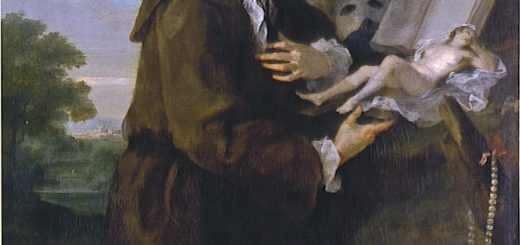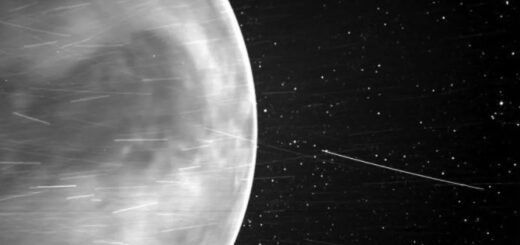Inca Legends of the Great Flood

The people of South America tell myths of a Great Flood and the events surrounding it.
The Ipurinas of northwestern Brazil retain one of the most elegant myths about the time of the disaster:
“long ago the Earth was overwhelmed by a hot flood. This took place when the sun, a cauldron of boiling water, tipped over.”
Further south, the native people of Chile, the Araucanians, recount a traumatic memory:
“The Flood was the result of a volcanic eruption accompanied by a violent earthquake, and whenever there is an earthquake the natives rush to the high mountains. They are afraid that after the earthquake the sea may again drown the world.”
Like the Araucanians… the Inca were paralyzed by the fear that any change in the Sun foretold doom.
A 1555 Spanish chronicle spoke of this trepidation:
“…[when] there is an eclipse of the sun or the moon the Indians cry and groan in great perturbation, thinking that the time has come in which the earth will perish…”
The famous Peruvian historian, Garcilaso de la Vega, son of a Spanish conquistador and an Inca princess, asked his Inca uncle to tell him the story of his people’s origins. How had Lake Titicaca become the source of their civilization?
The uncle explained:
“…in recent times all this region which you see was covered with forests and thickets, and the people lived like brute beasts without religion nor government, nor towns, nor houses, without cultivating the land nor covering their bodies… [the sun-god sent a son and daughter to]… give them precepts and laws by which to live as reasonable and civilized men, and to teach them to dwell in houses and towns, to cultivate maize and other crops, to breed flocks, and to use the fruits of the earth as rational beings…”
The “gods” who brought agriculture to the vicinity of Lake Titicaca were said to have come “out of the regions of the south” immediately “after the deluge.”
In other words, agriculture was introduced to Lake Titicaca by people who already possessed the skill, who weathered the cataclysm, and who may have arrived here from other lands, possibly the fabled Atlantis/Lemurian regions said to have been destroyed by the flood.
The word “Inca” meaning “Son of the Sun” was a title originally carried only by the Emperor.
To preserve his culture from the ravages of the conquistadors, Inca Manco II left the great capital of Cuzco in 1536 and retreated deep into the Andes. He took with him three sons, each of whom would in turn become Inca, suffering a succession of bloody encounters with the Spanish.
Manco II chose a mountain peak overlooking the Urubamba valley to build his palace. Pizarro, leader of the Spanish invaders was never able to find this secret retreat, and its existence intrigued those who followed him. All who tried to discover the lost city, failed.
Later, in the same century, two monks, Friar Marcos and Friar Diego, again sought it’s whereabouts. Friar Marcos fired with a ” … desire to seek souls where not a single preacher had entered and where the gospel message had not been heard,” traveled with a medical missionary, Friar Diego, who became popular with the local people and favorite of the royal Inca.
The two monks established a convent at Puquiura near Vitcos, and were fascinated by Inca stories of the “Virgins of the Sun” who dwelt in a fabulous city known only as “Vilcabamba the Old.”
This city in the mountains was said to house great “wizards and masters of abomination.”
Daily, the two monks tried to coax the Inca into revealing the location of this city. Finally, he agreed to take them and after three days they arrived at the foot of yet another barrier of mountains that jutted even further into the sky.
For weeks the monks preached and taught the natives who lived in a settlement just beyond sight and sound of the mystery city, they were forbidden to enter its enclaves for fear they would learn something of its rites, ceremonies, and purpose.
Friars Marcos and Diego finally concluded they would never be allowed access.
Four centuries later in 1911 an American historian and explorer, Hiram Bingham (1875-1956), discovered the haunting ruins of a lost Inca outpost cradled in the summit of a mountain called Machupicchu, he believed [at the time] that he had discovered the lost city of “Vilcabamba the Old,” and recovered a number of skelatal remains, predominately female, which he later sent to Dr. George Eaton of Yale University.
The professor concluded that among the remains,
“there was not a single one of a robust male of the warrior type, there are a few effeminate males who might very well have been priests, but the large majority of the skeletons are female …”
Why did the Inca retain a settlement of young women in the mountain retreat Machu Picchu?
For the Inca this hidden sanctuary may well have afforded him an inner earth enclave accessible from the city through a vast network of caverns, and tunnels, said to criss cross all of South America. If another deluge were unleashed a Sanctuary with hidden access to a secure realm might well repopulate a drowned world.
In his book, “The Lost City of the Incas,” Bingham described one of the rituals performed at the winter solstice which ritually tethered the Sun to the Earth. The “Intiwatana Stone” located atop the pyramid at Machupicchu, may well have been erected to “energetically tie the Sun to the Earth.”
Legend speaks of a “mystical cord” securing the Earth to the Sun “guiding it across the heavens,” to keep it on course.
The “hitching post of the sun” may have been a magical device used ritually to harness the Sun’s course thus preventing a replay of an ancient cataclysm. If so, then the mysterious appearance of solar megaliths (known as Sun Stones) around the globe may well represent ancient attempts to secure the sun in its new path after a great Flood; a reigned sun could not release another cataclysm of tectonic shifts and crustal movement; the earth would be safe for another year.
This obsession with the stability of the sun’s path is found in the American southwest as well.
Among the ruins of the Anasazi (a Navajo word meaning “the ancient ones”), are the famed cliff dwellings and solar atars.
Chaco Mesa in New Mexico is the site of one of the most remarkable solar megaliths – three slabs of stone, each weighing two tons arranged so that the light of the sun falls on a spiral petroglyph marking the exact alignment of the summer and winter solstices, and the spring and fall equinoxes.
Discovered in 1977 by artist and amateur archaeo-astronomer Anna Sofaer, this solar calendar has been called a “sun dagger” because of the pattern the sunlight makes on the rock carvings during the summer solstice.
Sofaer called the marking a “sun dagger” but it may have actually served as the Anasazi’s equivalent of the Incas’ hitching post of the sun.
If so, it would be more properly called a “solar cord,” designed to prevent a wayward sun or at least monitor the sun’s path to ensure that all was in order. The fear of a wayward sun or falling sky became a global nightmare for the survivors of the last earth crust displacement.
From all corners of the Earth, the same story is told.
- The sun deviates from its regular path, the sky falls.
- The earth is wrenched and torn by earthquakes and finally a great wave of water engulfs the globe.
- Survivors of such a calamity would go to any lengths to prevent it from happening again.
- They lived in an age of magic, it was natural and necessary to construct elaborate devices to pacify the sun-god and control or monitor its path.
But why did the sky fall?
“May the Sun remain a young man”
and the Moon a young woman,
may the world not turn over –
let there be Peace!
– An Inca Prayer –



 Creators of mankind
Creators of mankind Description of “Tall white aliens”
Description of “Tall white aliens” Where they came from?
Where they came from? About hostile civilizations
About hostile civilizations The war for the Earth
The war for the Earth “Tall white aliens” about eternal life
“Tall white aliens” about eternal life Video: “Nordic aliens”
Video: “Nordic aliens” Aliens
Aliens Alien encounters
Alien encounters The aliens base
The aliens base UFO
UFO Technology UFO
Technology UFO Underground civilization
Underground civilization Ancient alien artifacts
Ancient alien artifacts Military and UFO
Military and UFO Mysteries and hypotheses
Mysteries and hypotheses Scientific facts
Scientific facts


















